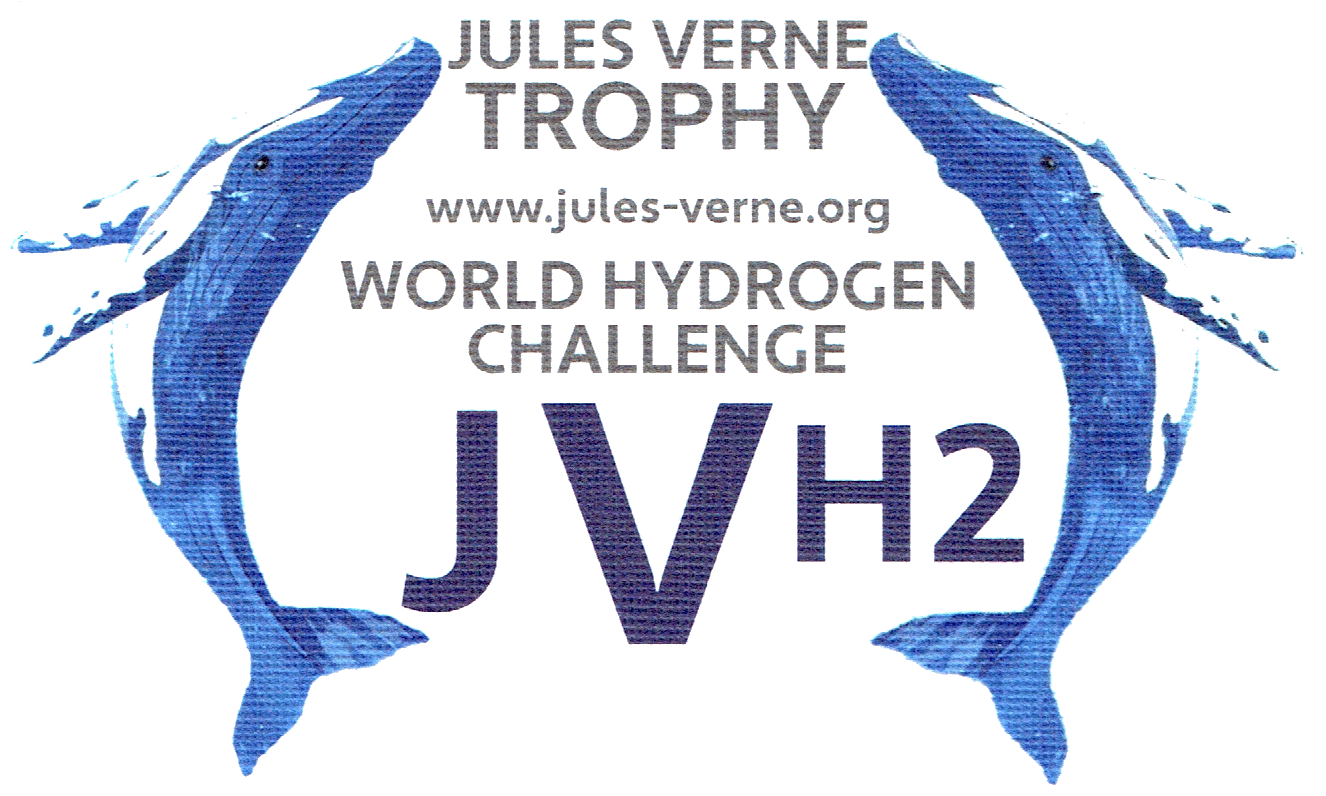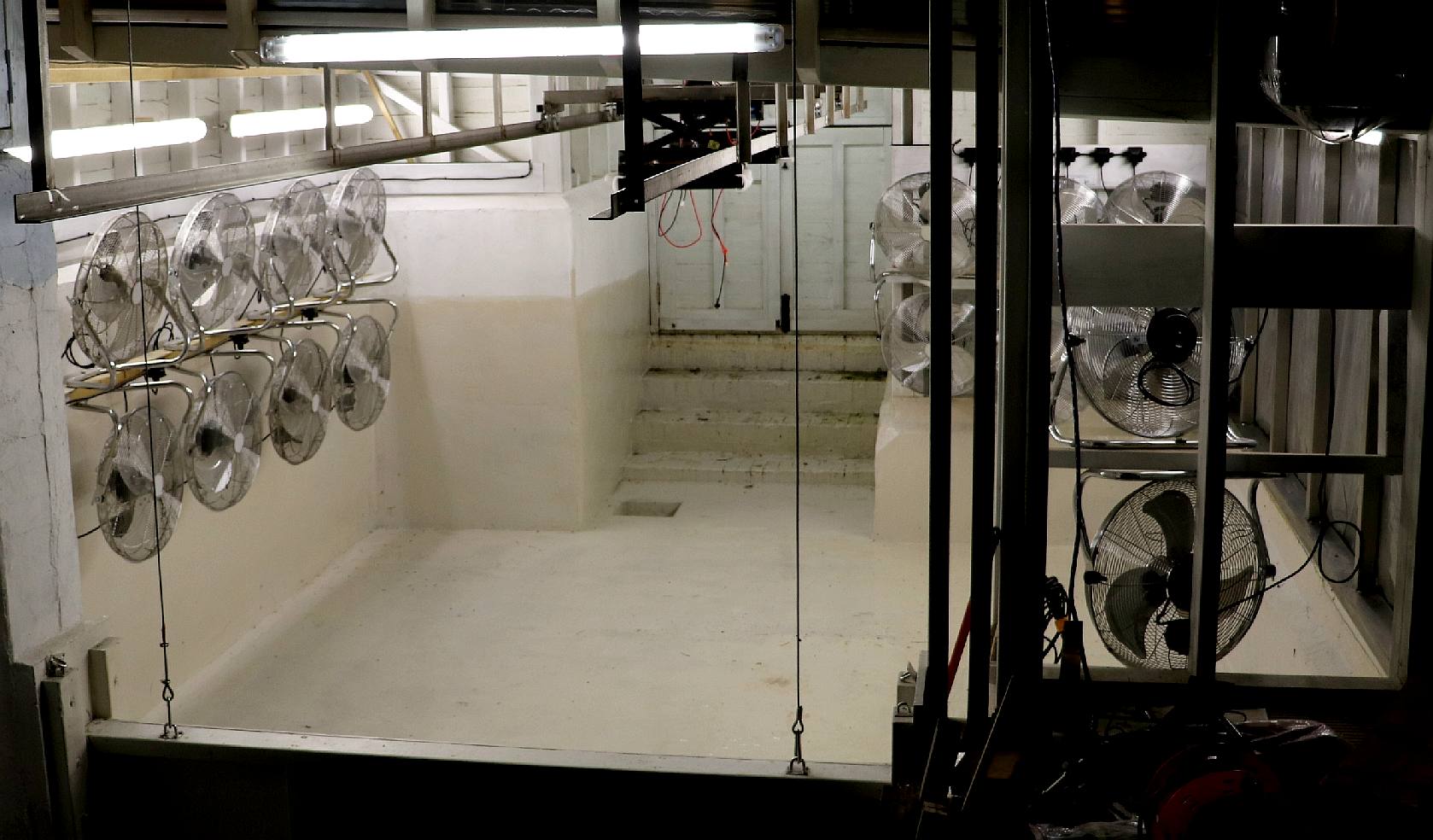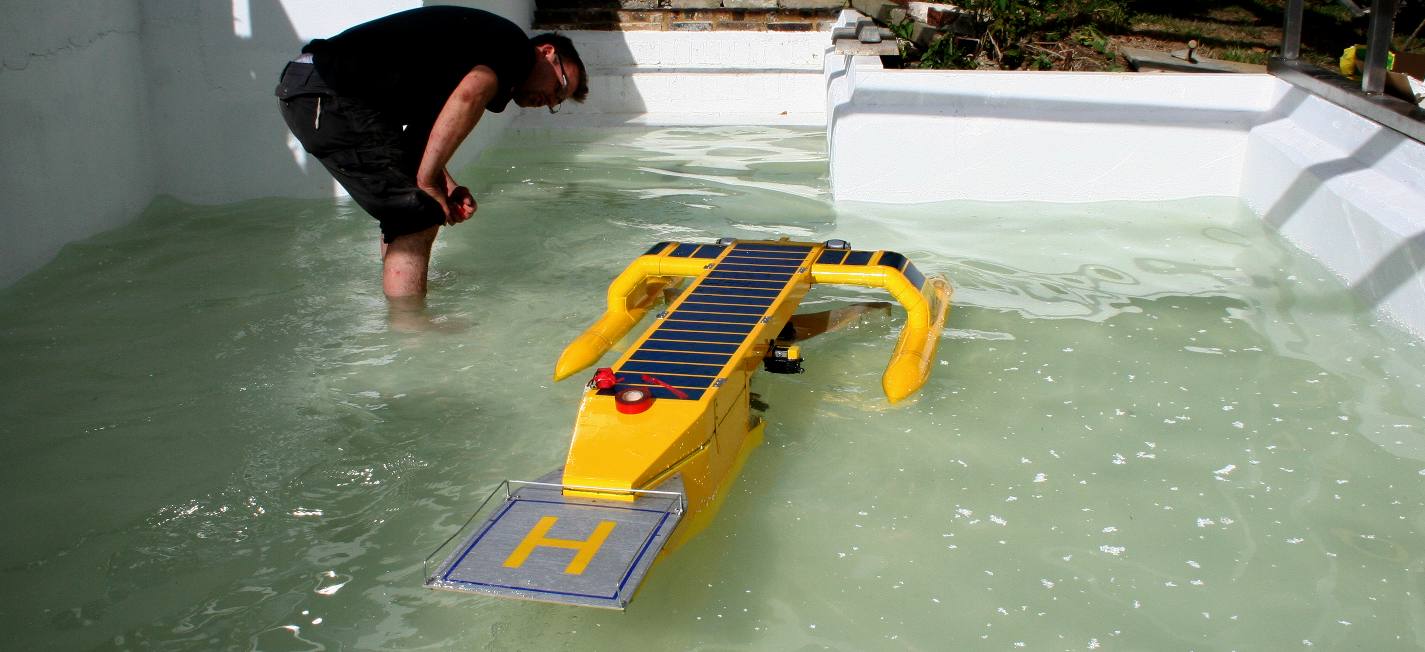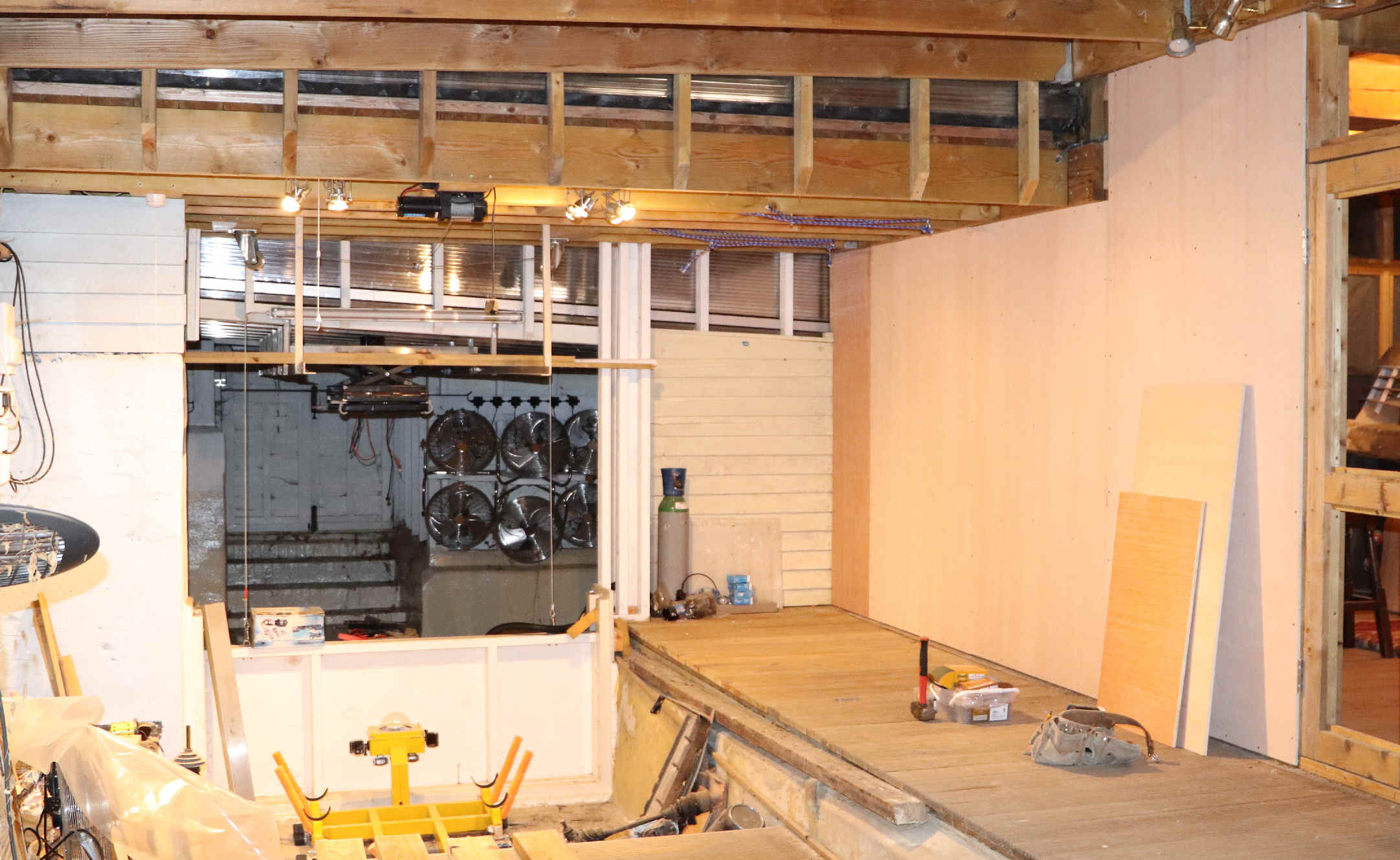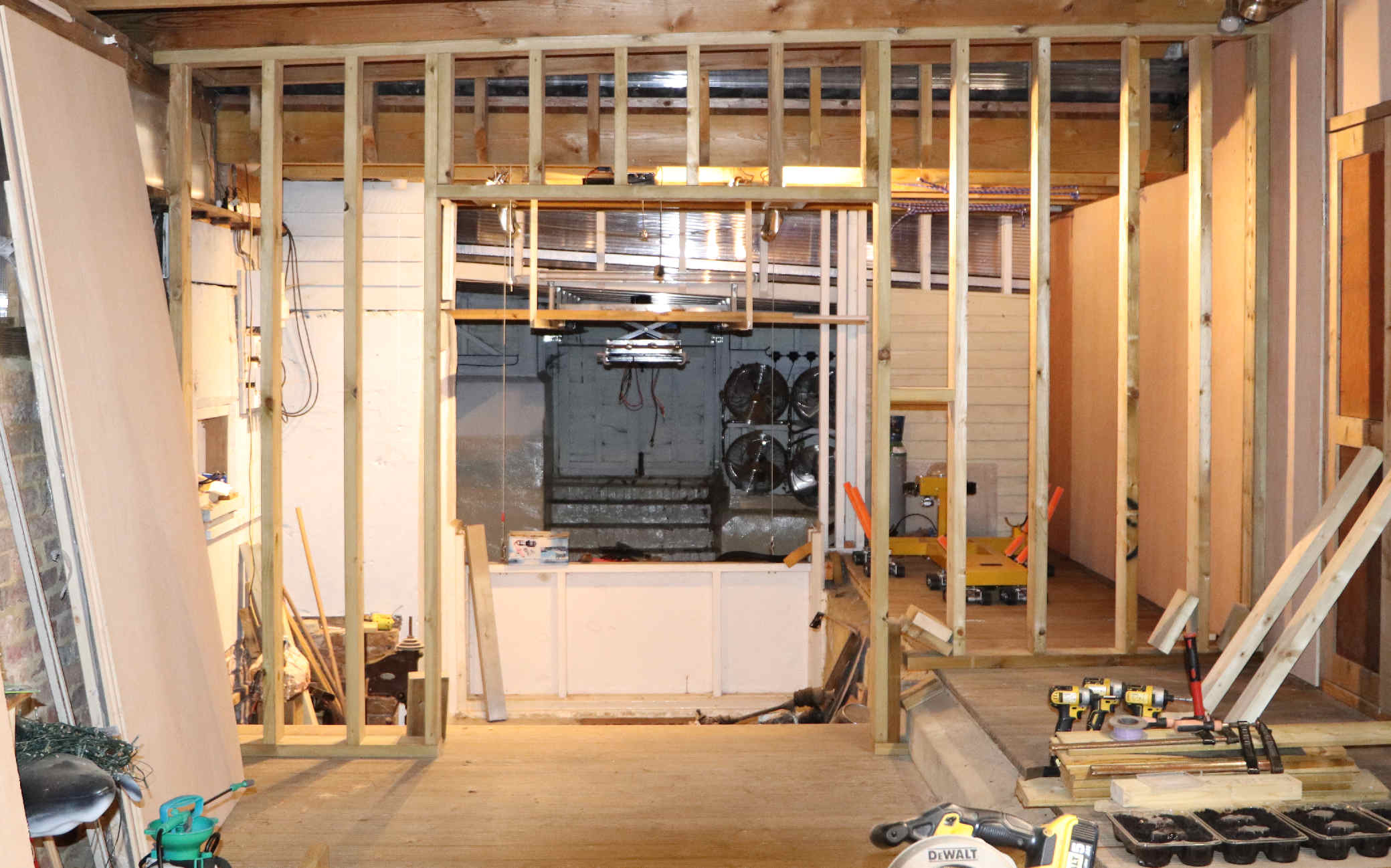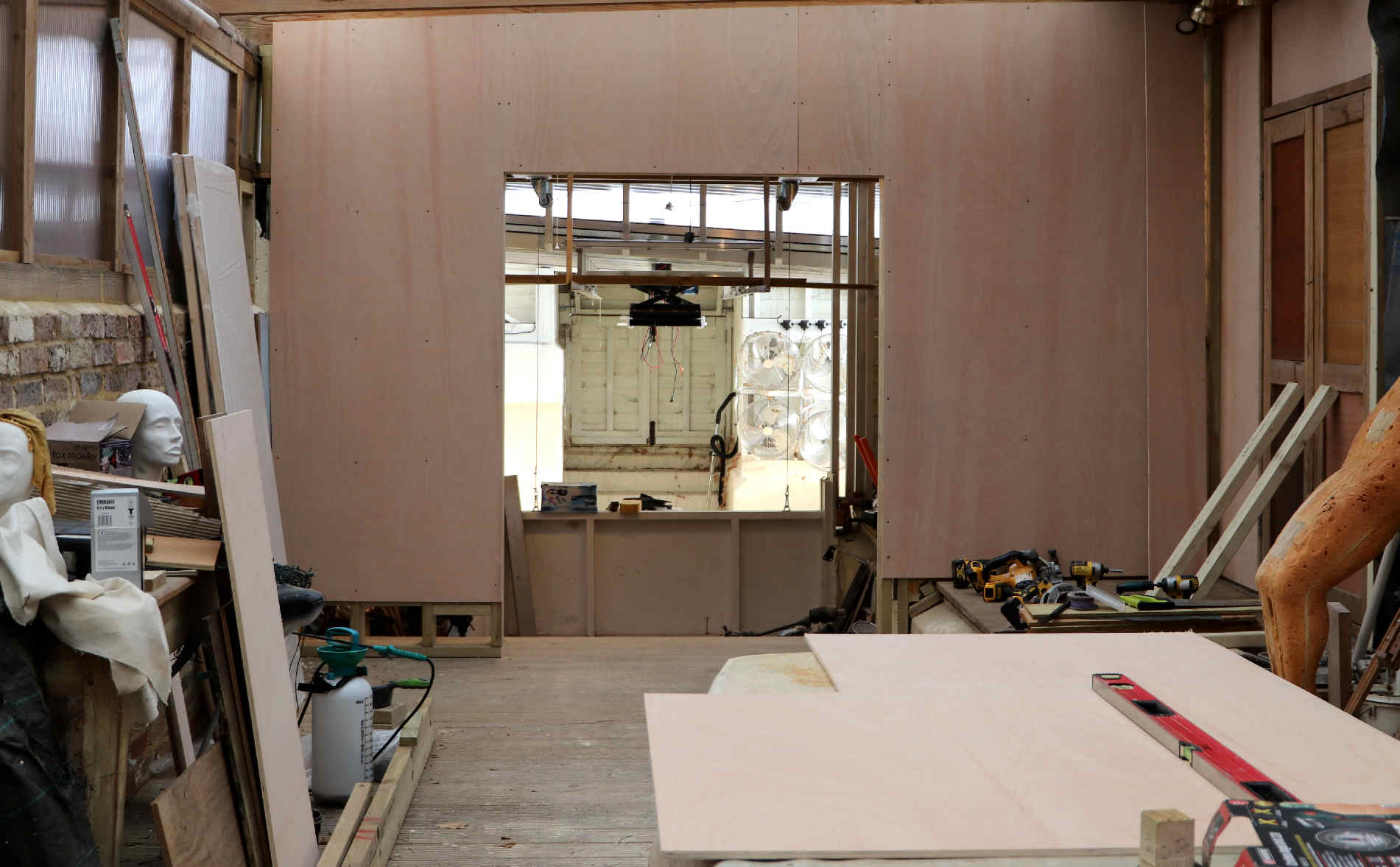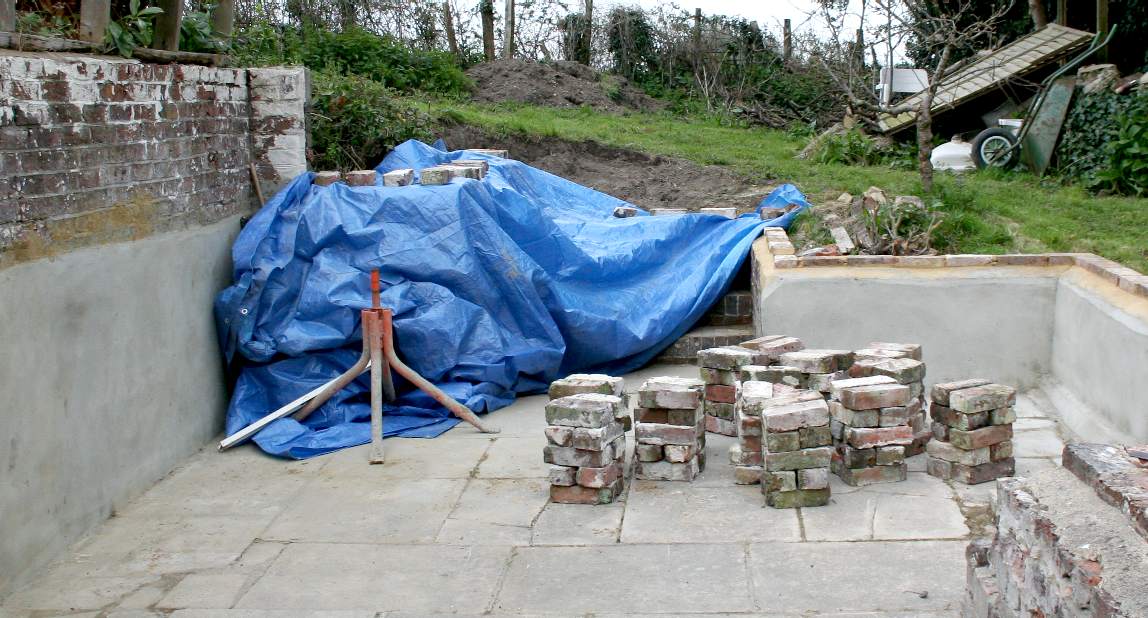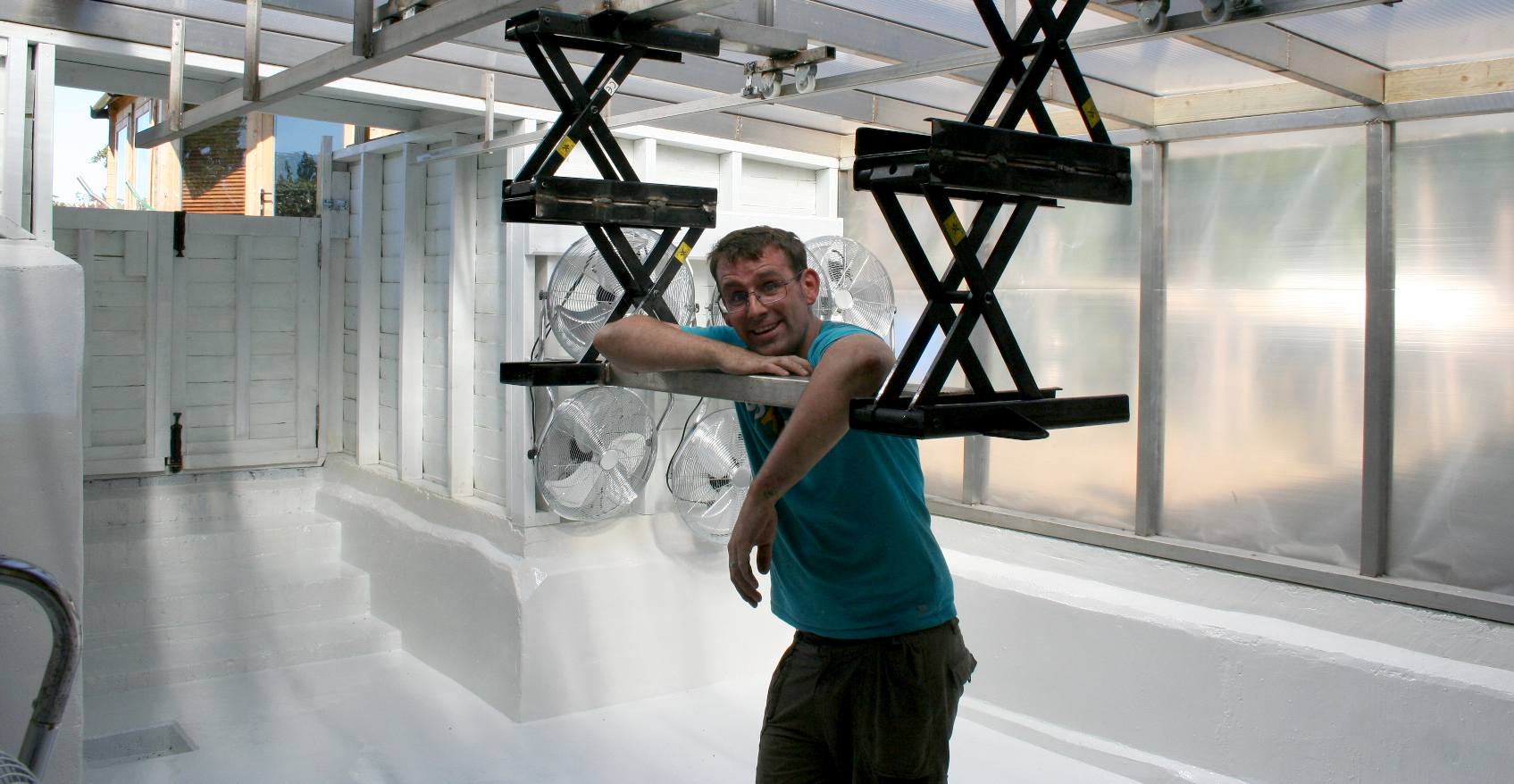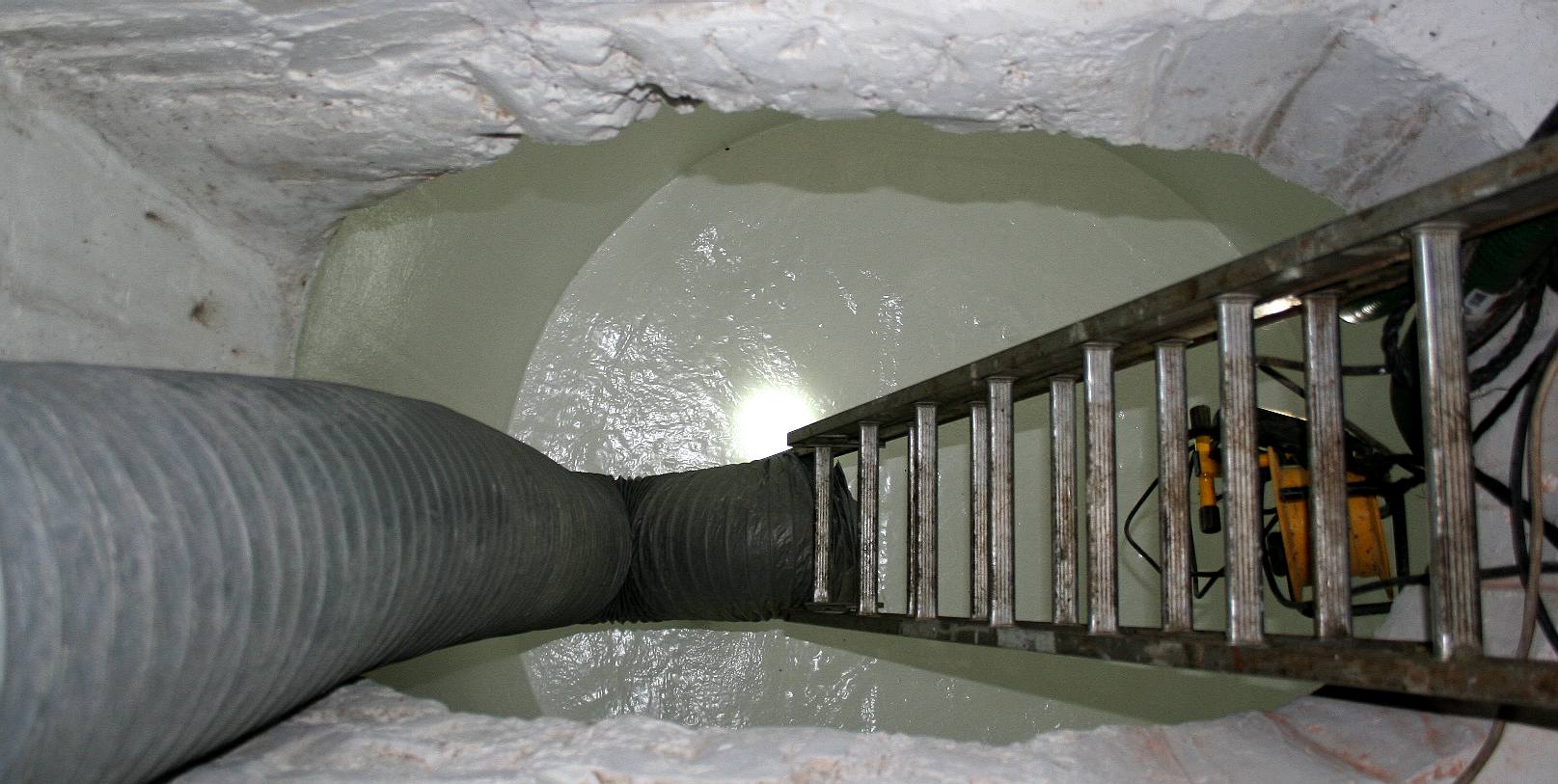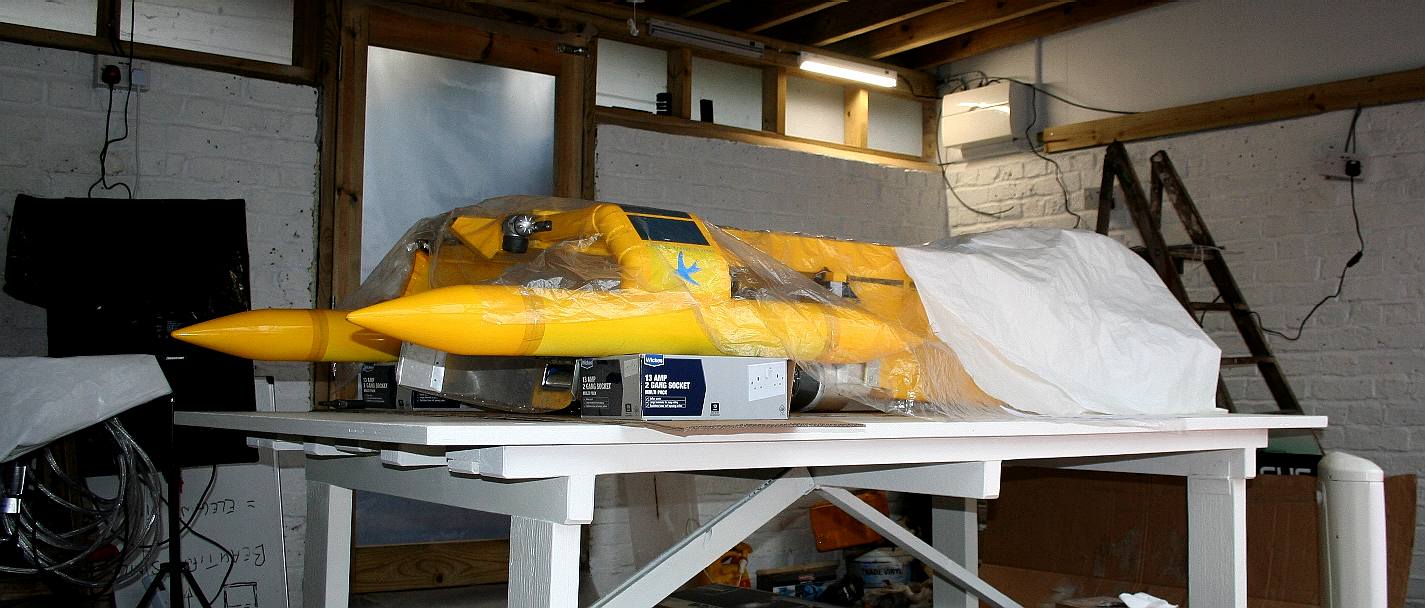|
MODEL WATER BASIN - TEST TANK
FACILITIES FOR MEASURING DRAG & SEAKEEPING OF SCALE SHIP HULLS
Please use our A-Z INDEX to navigate this site or return HOME
|
|
LED LIGHTING - It helps to be able to operate this facility when it gets dark. Six waterproof LED strip lights did the job. This compact unit can be set up to re-circulates water using vanes that are put into the tank for drag and wave tests. The tank can be emptied and refilled in forty minutes. Twenty minutes for each transfer to and from the underground holding tank. This unit is ideal for low cost conceptualization, before detailed CFD, or other development.
29 JULY 2016 - In our very basic water basin, tests were conducted to remove (simulated) ocean plastic from our tank. This simple experiment proved the concept. But, it would need some serious development to be able to identify and filter only marine litter, and leave flora and fauna unscathed. This would involve robotic controls of variable filters, object recognition and other industrial sorting methods. In 2022, Target 7 of the COP15 agenda is to do with eliminating harmful plastics. A bit late for the Foundation, whose dream team of academics long ago disbanded. Policy development moves at a snails pace, except in time of war. Over six years for the UN to put their car in gear. We anticipate another twelve years before we see any action. The 2030 target is only to "reduce," and by an unspecified amount. It's a bit too woolly for our liking. We are though pleased to have played a part in shaping policies. We wrote to every G20 nation. Germany wanted proof, suggesting that we pay, not the EU. How? Canada made more positive noises. The UN said they'd not fund development, but might help after we'd paid for it. Cart before the horse stuff of legend.
UN COP15 TARGET 7 - Reduce pollution risks and the negative impact of pollution from all sources, by 2030, to levels that are not harmful to biodiversity and ecosystem functions and services, considering cumulative effects, including: reducing excess nutrients lost to the environment by at least half including through more efficient nutrient cycling and use; reducing the overall risk from pesticides and highly hazardous chemicals by at least half including through integrated pest management, based on science, taking into account food security and livelihoods; and also preventing, reducing, and working towards eliminating plastic pollution.
The Cleaner Ocean Foundation (COF) maintains, operates and sometimes develops a small water testing tank at their HQ in Sussex, England - volunteer driven. The unit has facilities to generate waves and side winds, deemed to be essential when developing low drag hulls powered by hydrogen fuel cells, with solar assistance. Especially where the solar assistance is by folding photovoltaic panels, that present a large area to the wind - and may need to be furled.
NOVEMBER 2022 - We had a massive moisture problem, each time the tank was filled. The sun would warm the water, accelerating evaporation, that then caused mould to grow in other areas as condensation spread to other areas not separated. We tried polythene sheeting, rolled up for trails, and then down again when not in use. But that was not as effective as we'd hoped. Finally, despite the expense, it was decided to install moisture proof barrier walls - as partitions with extra treatment against mould and rot.
Treated
(tanalised) timbers were used as carcassing. Plywood is not supplied
treated. It has to be sprayed with a good quality proprietary brand of rot
proofer. Tanalised timber is timber that has been pressure treated with a mixture of chemicals, to help protect it from all weathers. The treatment is done using hydraulic pressure, forcing tanalith (the chemicals used to tanalise the timber) into every inch of the timber, to make sure it is
as treated as is possible.
Commercial shipping is now subject to IMO regulations to rid us of air pollution from dirty bunker diesel oil fumes. The objective is to make marine transport zero emission by 2100. The transition is not going to be easy.
Large cruise liners and cargo ships might benefit from solar assistance, providing some relief for renewably generated hydrogen and electricity, to charge battery vessels, and power fuel cells.
At the moment solar power has taken a back seat due to a lack of deck space, but could be employed if the folding wing system is developed as a bolt on accessory, to challenge, and/or supplement wind assisted ships.
With a dividing wall giving a moisture proof barrier to the room with the underground holding tank [right in the picture]. We moved on to a partition to prevent the moisture from the water test tank, from reaching our robot lab.
The frames had to be skinned. In ordinary house builds, plasterboard would suffice. But where we need a moisture proof barrier, we elected to use a hardwood plywood, exterior grade. Liberally treated with Barratine preservatives, using pressure sprayer for application.
As far as we know the system we are developing is unique, and has not been attempted at full scale.
We are working at 1:20 scale. Using custom build, and components that are available off the shelf.
The full size system will more than likely use rotary hydraulic motors. At one twentieth scale we are using a 12 volt dc motor mated to a gearbox for 140:1 reduction. We intend experimenting with other set-ups and even belt reduction systems. Leaving few rocks unturned in the quest for practical perfection.
DECK AREA MULTIPLIER
As an example, a traditional, large, cargo ship with a deck area of some 5,000 m2 might generate 4,000 kilowatts (kW) in a day. This could be increased (optionally) by a factor of three (area) and doubled (by tracking) to give 24,000 kW in a day (24MW. Converted to propulsion (optimally) by electric pod thrusters, to provide roughly 10-20% of the daily propulsive energy of a cargo vessel. Dependent on efficiencies of the ICE comparison, and assuming a higher conversion rate, electricity in - to thrust - of submerged electric jet thrusters (pods), that have no drive shaft or gearbox losses.
At the moment solar power has taken a back seat due to a lack of suitable deck space, but could be employed if the folding wing system we have in mind is developed as a bolt on accessory, to challenge, and/or supplement wind assisted ships. Care should be taken not to shade PV panels, in designing any installation.
DECEMBER 2022 - Well, that's the doors in. Now all it needs is handles and a coat of exterior grade paints. Security is also much improved. Though, the Foundation does not do work for other entities. Industrial espionage is always a risk. Work will continue in January and February of 2032.
FROM THIS: It was a courtyard set into a hillside, previously used by the RAF during WWII for radio transmissions, alongside a bomb shelter. The main building was a makeshift hospital for wounded airmen during hostilities. All nicely recycled and converted.
TO THIS WATER BASIN - The test tank and plumbing expert, Chris, (resting on his laurels). Water from this basin is pumped into the underground holding tank, seen below. By this means we can service the testing equipment and set up new experiments quickly. The tank has been mostly redundant, since EU funding applications between 2017 - 2020 only reached reserved status. These were to do with the SeaVax ocean plastic cleaning machines. Policies were not in place, but we are happy to report that at COP15 Biodiversity Summit, the UN finally put marine litter on the Agenda. We were several years ahead of the curve. Our (then) plastic dream team are now employed elsewhere. Our new team is concerned with climate change and marine transport.
UNDERGROUND - Water storage tank for transfers to and from the water basin seen above. This means we recycle water, each time passing through a filter via pumps. THE ROBOT LAB: The robotics laboratory roofed and dry with power and lighting to enable further development of scale models used for testing, without taking workshop space that is used for constructing full size components.
You need not operate in the maritime sphere to join in this cleaner ocean adventure, merely share an interest in conserving the seven seas with pollution free transport, and a desire to help where you might. On 21st December 2022, we were blessed with one short week where it snowed and settled. Temperatures plummeted to 1-3 degrees C. And the ponds in the Park froze over almost completely for one day. Our roving cameraman captured the stunning picture below, on his way back from the little village of Herstmonceux, heading south, just slightly off the beaten track. One week later it rained and temperatures climbed to 10 degrees centigrade. It has not stopped raining since, and it is very nearly the New Year 2023 as we write.
|
|
Please use our A-Z INDEX to navigate this site or return HOME
This website is Copyright © 2023 Jameson Hunter Ltd - an equal opportunities company.
|
